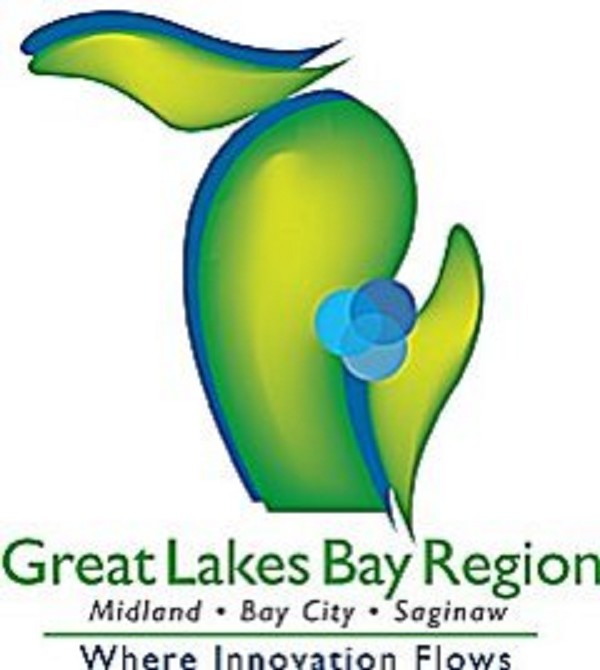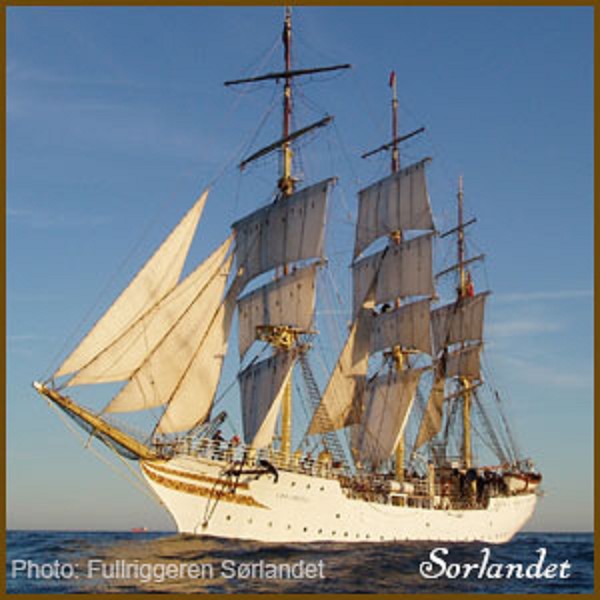GREAT LAKES BAY: Is It Clicking? Or Do We Need a Clearer Brand?
June 23, 2013
By: Dave Rogers

 One of the attractions at the Tall Ship Bay City Festival beginning July 11 is the Sorlandet, a 186 foot long Norwegian floating classroom for high schoolers.
One of the attractions at the Tall Ship Bay City Festival beginning July 11 is the Sorlandet, a 186 foot long Norwegian floating classroom for high schoolers.
Heads in beds and seats on buses.
Those are the goals of tourism, from what I've heard from the pros.
Annette Rummel, CEO of the Great Lakes Bay Regional Tourism Bureau is enthusiastically doing her best to promote the area. Her statistics are impressive: a 60 percent increase in three-county marketing investment totals, from $839,008 in 2009 to $2,118,436 in 2012.
Pure Michigan advertising is the hottest thing in the tourism field nationally; but the Great Lakes Bay area is not benefiting up to par.
The clicks on the Travel Michigan website (Michigan.org) for Bay, Saginaw and Midland are positively insipid, 27 year-to-date for Bay, 12 for Midland and 70 for Saginaw.
Clicks are defined as the number of times visitors clicked an external link and were transferred to an external website.
Great Lakes Bay Regional does much better in clicks, 1,999, and Frankenmuth soars to 8,839. But even that is puny compared with Mackinaw Island at nearly 21,000, Traverse City at 22,000 plus, Ann Arbor at 15,000, Experience Grand Rapids at 12,000 plus, Muskegon at 5,555 and Gaylord and Grand Haven at 3,000 plus each.
The only thing we can figure is that hardly anybody knows where the hell the Great Lakes Bay area is!
Yet, I guess an optimist would say.
Apparently, despite massive "come let us all reason together" initiatives from the corporate powers, we have not established GLB as a brand, the most important factor in marketing. Will that ever happen is anybody's guess, but every day it takes to catch up is a gamble for business people here.
It's encouraging that the GLB is reaching out to residents of the area in a survey asking what they think will sell; obviously somebody realizes we need a boost in our identity factor and in local drawing cards.
After all, there is a lot of competition out there for local tourism dollars. What do we offer that is unique, different, spellbinding?
Tall Ships are fantastic but they only come every few years, so maybe we need our own fleet of tall ships with pirate actors. The Appledore is a tall ship but it needs friends and a little more pizazz.
Whatever it is we need to find it, develop it, buy it (think Honey Fitz Presidential Yacht) and market it. We have the Old Masonic Temple and the Scottish Rite Center, the destroyer USS Edson and the Dobson Toy and Fire House Museum that need support because they are destination attractions. Historic home and building tours, ghost tours, maritime tours, outdoor dramas -- all those things have been recommended to us by consultants over the past couple of decades and have not been developed to the fullest extent.
We could use a dozen or more historic markers; this town is littered with unrecognized historic sites that people will drive miles to see, if they only knew.
Tall Ships Town might be better, or Historic Valley, or Great Loonville.
Blue Water Area, Four Flags Area Council, Harbor Country Lodging Association, Paradise Area Tourism Council and other Michigan group marketing efforts have the same problem in gaining identity, clicks and tourists.
We're pouring money into marketing and Mrs. Rummel is doing a stellar work in reducing overhead at the local CVBs (convention and visitor bureaus), down 68 percent in the last few years.
The increase in the per room tax from two percent to five percent in 2011 has put more money in the kitty and the additional advertising dollars have helped raise the total income from hotel overnight collections substantially, from 2009 to 2012 up from $7,812,350 to $9,425,716 in Bay, from $13,771,800 to $17,582,560 in Midland and from $20,574,100 to $31,047,164 in Saginaw.
She's even socked away $150,000 and is seeking a site for a permanent building to house the Bay County CVB.
The U.S. hotel industry reported increases in all three key performance metrics during May 2013, according to data from STR (Smith Travel Research, Hendersonville, Tennessee).
Overall, the U.S. hotel industry's occupancy rose 1.1 percent to 64.0 percent, its average daily rate was up 3.6 percent to US$109.86 and its revenue per available room increased 4.7 percent to US$70.34.
The Great Lakes Bay Region's occupancy rate hovers around 49 percent, nearly the same in Bay, Midland and Saginaw counties. That's 15 percent below the national average and about 7 percent below the latest Michigan average of 56 percent.
"While demand for transient hotel rooms was solid for the month (+4.3 percent), year-over-year demand growth for group rooms was down (-3.4 percent) and continued to be a drag on overall industry performance," said Brad Garner, COO at STR.
"Key performance indicators were still positive for the month, firming year-over-year comparisons worked to slow the rate of growth experienced in previous months. The absolute level of ADR for the 12-months ending May reached an all time high of US$108, up more than US$4 from the previous peak in 2009.
"Though group business remains elusive, we remain optimistic that group demand can provide life to industry performance moving forward," Garner said.
Among the Top 25 Markets, Dallas, Texas, reported the largest occupancy increase, rising 6.4 percent to 64.5 percent. Detroit, Michigan, followed with a 6.1-percent increase to 64.5 percent. St. Louis, Missouri-Illinois, fell 6.2 percent in occupancy to 66.2 percent, reporting the largest decrease in that metric.
Houston, Texas (+12.1 percent to US$113.42), and Oahu Island, Hawaii (+12.1 percent to US$196.35), experienced the largest ADR increases for the month. Two markets reported ADR decreases: Atlanta, Georgia (-3.3 percent to US$83.57) and Washington, D.C. (-2.9 percent to US$152.20).
Five markets achieved double-digit RevPAR increases: Houston (+17.4 percent to US$81.45); Dallas (+14.3 percent to US$59.68); Detroit (+12.1 percent to US$54.50); San Francisco/San Mateo, California (+11.4 percent to US$152.39); and Anaheim-Santa Ana, California (+10.6 percent to US$89.57). Washington, D.C., fell 6.6 percent in RevPAR to US$113.36, reporting the largest decrease in that metric.
Pure Michigan is a great campaign theme, but in 2011, Michigan travel officials say 67 percent of tourists were Michigan residents and 33 percent of visitors came from outside the state.
"The fact that increases in visitor spending over the past several years have been primarily a result of increased out-of-state expenditure is a positive
indication that the industry is on the right path," says George Zimmerman, director. "Further supporting this are record hotel occupancy rates in 2012 and continuing into 2013."
Regionalism is the trend these days and our "powers that be" have dictated a regional approach to tourism marketing. Is Great Lakes Bay too amorphous ever to be immediately recognizable? Could it be confused with other Midwest places also on the Great Lakes like Green Bay, Put In Bay, Big Bay, Traverse Bay, Thunder Bay?
Perhaps we all should be more patient, but we're still a blip on the radar screen and the blip needs a little more character to draw people with money. That's the way we see it, and so far the facts cannot be disputed.
###